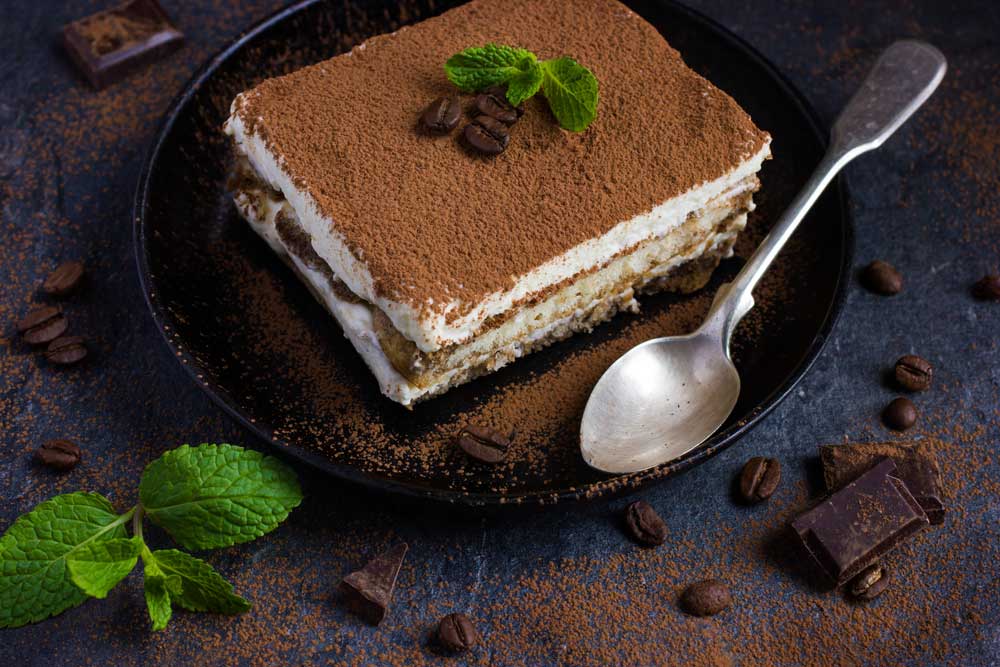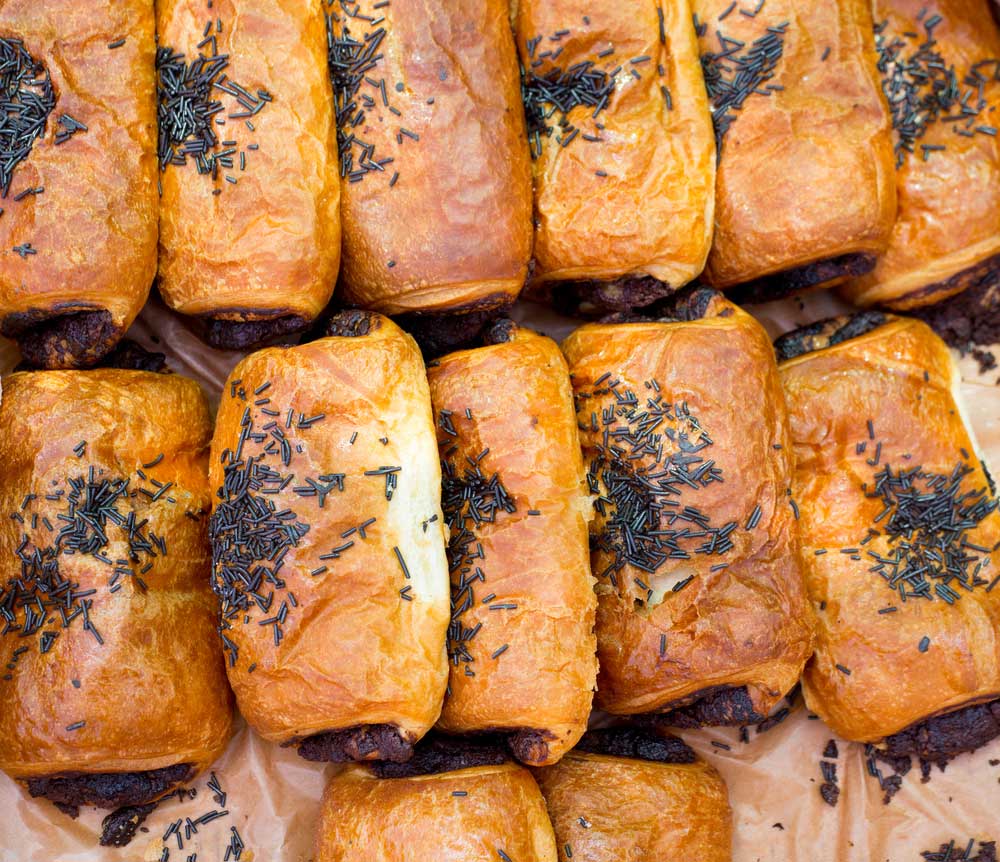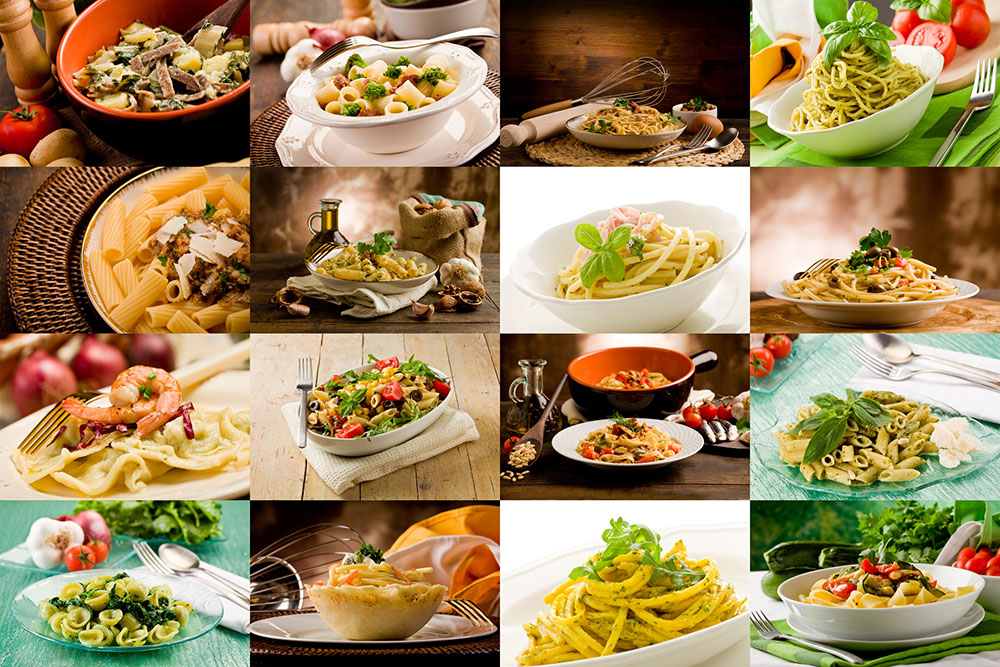Dessert in Italian is something to be celebrated. Soon after the release of Federico Fellini’s s satirical comedy in 1960, ‘La Dolce Vita’ (the sweet life) became a popular term worldwide.
Yes. Dolce (plural Dolci) means sweet or dessert in Italy.
An Italian Festa lacks the essence unless you line up the Dolci at the dinner table. Italian desserts are the ultimate sugary treat for your tastebuds.
The Tradition of Serving Dessert in Italian Culinary Art
Desserts are an integral part of Italian cuisine and are famous worldwide. People in Italy are zestful about sweets, cakes, candies, ice creams…and lots more. During ancient times, desserts in various parts of the country were sweetened with honey and fruit extracts.
Arab invasion of Sicily in the 9th century marks the beginning of sugar production and the Dolci renaissance in the country.
Desserts make up the final course, from formal dinners to informal feasts. Sweets were served in small portions at the end of the meal considering the high price tag of sugar during the medieval era.
In this article, we have shared the famous Italian desserts you can enjoy anytime, on any occasion.
10 Authentic Italian Desserts to Entice Your Sweet Tooth

Tiramisu
Tiramisu is the iconic creamy chocolate pudding native to Treviso town in Veneto, North Italy. The cake-style sweet dish is the most popular dessert in trattorias (Italian restaurants) worldwide. It is a mood-lifting flavorsome snack stuffed with coffee-infused ladyfingers coated in a dense layer of chocolaty mascarpone and cocoa.
Panforte
Panforte, also called panpepato (peppered bread) in Sienese, is a chewy snack served with hot cream coffee or wine. This 13th-century flavorsome bread made with pepper and honey was originally part of the Christmas traditions in the Province of Siena in Tuscany. Panforte can be preserved in food-grade plastic bags for up to 2 months in the refrigerator. Feel the crunch of roasted nuts, hot pepper, and fruits in every bite as you nosh the wedges.
Semifreddo (Half Cold)
Semifreddo is a yummy semi-frozen mousse that became popular in Spain and Italy during the 20th century. The main ingredients- egg yolks, cream, gelato, and sugar are whipped uniquely to let in the air forming a light, smooth, and creamy loaf. It is flavored with coffee, chocolate flakes/syrup, or fresh fruits.
Gelatos/Sorbettos
People in Italy relish the authentic gelatos at the gelaterias. It is a dairy-based frozen dessert but certainly not ice cream.
Gelato is prepared with milk, cream, sugar, and flavoring agents. These creamy frozen desserts are flavored with chocolate, coffee powder, vanilla, and nuts (pistachios, hazelnuts, etc.).
Often used interchangeably, gelato and ice cream differ in taste, consistency, and temperature settings. Gelatos are creamy, silk, and thick, prepared at least 10-12 degrees Fahrenheit greater than ice cream to prevent the chilling hard surface.
And for vegan foodies, sorbetto (sorbet) and granita are non-dairy frozen desserts. Mashed fresh fruits churned with sugar in the ice cream machine are all you need to make a smooth, creamy, and scoopable scoff. As for granita…it is the flaky ice prototype of sorbet.

Affogato al Caffe (Drowned in Coffee)
There is confusion about whether affogato is a form of sweet or beverage. But one can spot these listed on the desserts menu at a ristorante in Italy.
This espresso-dipped ice cream is simple to make in a few minutes. When guests give you a surprise visit on a hot summer day, affogato is best served in shots glasses presented with biscotti on the platter. Many restaurants also make this dessert with Bicerin.
For the creamy cocktail, replace espresso with Kahlua, Amaretti, or any other alcoholic drink.
Panna Cotta (Cooked Cream)
Panna cotta is a wobbly classic Italian dessert from Piedmont in Northwest Italy. This region, sharing borders with Switzerland and France, is known for its incredible dairy products.
You can make this molded pudding with three basic ingredients- cream, gelatin, and sugar. Throughout the ages, cookbooks have come up with offbeat garnishing ideas for panna cotta…fresh fruit topping, chocolate sauce, strawberry compote, vanilla, coffee, and more.
Tartufo di Pizzo
Better known as Tartufo (truffle), there is a fascinating history behind the invention of this luscious dessert. Tartufo was made for the first time at a high-profile wedding ceremony in Pizzo, Calabria, attended by King Vittorio Emanuele II. Following an acute shortage of molding cups, Don Pippo, a famous confectioner, used sugar paper to wrap handmade gelato desserts with a fruit syrup filling. Today, it is made in various forms with melted chocolate ganache, cinnamon, cocoa, etc.
Cassata
Cassata Siciliana has roots of origin in the Arab invasion of Sicily. This ancient recipe was developed in Palermo, Sicily, during the 10th-century Islamic reign in the region. The delicious cake got its name from the Arabic word qa’sat (a type of baking pan).
It is a spongy cheesecake soaked in liquor with layers of ricotta and candied fruit toppings. Nowadays, cassata has many variations based on region and taste preferences, such as single-serving cassata, cassata a forno (baked in the oven), etc.
Pastiera Napoletana

Pastiera, a type of creamy tart, is believed to be made for the first time in a Neapolitan convent for Easter to represent the Resurrection. It is an aromatic tart made of cooked wheat, flour, eggs, ricotta, lard, and candied fruits, and treated with orange blossom water. The crispy and fragile consistency makes it a savory snack that pairs with a cup of espresso. Many confectionary shops in the country sell Pastiera throughout the year.
Torta Mimosa
Unlike most traditional Italian desserts, torta mimosa is a modern recipe presented by a chef and restaurateur, San Filippo di Contigliano from the city of Rieti in Lazio. San Filippo came up with his quintessential cake-making idea at a pastry competition held in San Remo city in 1962.
This sponge cake resembles the pale yellowish mimosa, the symbolic flower presented to women on 8th March on Festa Della Donna (International Women’s Day). These delicate flowers represent feminism and strength in women. Yellow sponge dragees décor all over looks exquisite picture-perfect confectionary. Inside the semi-hard crust lies the soft sponge layered with sleek custard.
Wrap Up,
The deep-rooted love for Dolci is eternal for people in Italy. Those who are familiar with Italian culture know the eminence of Vin Santo served with nutty Cantucci.
While the above ones are just the most famous Italian desserts, there is no end to options that you can try. Visit SESAMO and try out some our traditional Italian desserts today!





